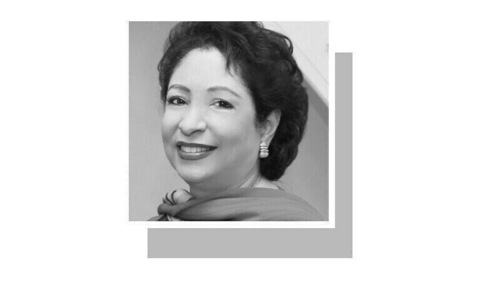Hope is the thing with feathers — perches in the soul — and sings the tune … and never stops. — Emily Dickinson
THE women of Pakistan keep on struggling on sheer grit and eternal hope but if you glance at the global data you would laugh at their tenacity and this ‘thing with feathers’ called ‘hope’: we live at the bottom of the pit when it comes to the gender gap.
According to the Global Gender Gap Index, 2015, Pakistan stands at the bottom — 144 out of 145 countries in the world. The index, prepared annually by the World Economic Forum, examines the gap between men and women covering four fundamental aspects: economic participation and opportunity, educational attainment, health and survival, and political empowerment.
The highest possible score is one (equality) and the lowest zero (inequality). Pakistan earned 0.559. But don’t sulk. Take this moment to rejoice at the status our Bangladeshi sisters have achieved: Bangladesh ranks 64 out of 145 with a score of 0.704. This restrains you from throwing in the ‘religious card’ as a reason for the sad state of affairs in Pakistan.
Let us single out the economic participation of women. You may say, who gives two hoots for economic participation and its indicators (such as the wage gap) when there are a hundred other sordid affairs confronted by women, ranging from inequity in education, skills and health to horrific extremes of sexual violence and social degradation — unless you win the argument that poor economic participation is linked with all other aspects of gender inequality.
Pakistan stands at the bottom of the Global Gender Gap Index 2015.
In the Gender Gap Index, 2015, economic participation and opportunity is counted as a crucial measure of equality, and comprises five aspects: labour force participation, wage equality for similar work, estimated earned income, number of legislators, senior officials, managers, and number of professional and technical workers.
Pakistan is doing poorly in all five: the female labour force participation rate is 22pc versus that for men at 67.8pc; women are paid 23pc less than men for similar work; women’s average monthly income is Rs9,760 compared to men’s monthly earnings of Rs15,884, and only 0.3pc women are employed as managers, 6.4pc as professionals and 0.9pc as technical workers (Labour Force Survey 2014-2015).
Since the 2015 Oscar acceptance speech by Patricia Arquette, wage inequality in Hollywood has brought the issue of gender wage gap to the mainstream discourse. Globally, women’s average wages are between 4pc to 36pc less than men’s. According to a 2014 global dataset, Nordic countries are at the top with the least gap (0-5pc) in men and women’s wages. In Europe and the US, the figure is between 15-20pc and in the Asian countries the gap is bigger at 20-25pc.
Gender pay gap is defined as the difference between women’s and men’s average full-time equivalent earnings expressed as a percentage of men’s earnings. The gap between the earnings of men and women is a composite of many factors including the women’s level of schooling and skills, social stereotypes, motherhood, unpaid care work or family responsibilities leading to part-time or flexi-work, and direct or indirect discrimination on the basis of sex.
The gender wage gap is divided into two parts: an ‘explained’ part which is accounted for by variables such as an individual’s level of education or skills, and an ‘unexplained’ component which, according to the International Labour Organisation “…captures what remains after adjusting for these observable characteristics, and, therefore, suggests discrimination in the labour market”.
If you scrutinise the five factors of the gender gap score card, you will note that Pakistan ranks 88th among 145 countries when it comes to wage equality for similar work, while Bangladesh stands at 126 and India even lower at 129. I have not come across any research on this aspect. Economists can explain it better.
Perhaps Pakistan’s low female participation, compared to India’s 33pc and Bangladesh’s 58pc, is one of the factors. With the bulk of women working as unpaid employees the number of women in professional jobs and higher positions that bring better remuneration is skewed. The corporate sector does not pay a miserly sum to professional women though the number of women at the top is negligible. Government employees’ pay scale from grade one to 21 is the same for both men and women though fewer women make it to grade 22.
What can be done to close the gender gap? The report says that “the closure or continuation of gaps is intrinsically connected to the framework of national policies”. Would our largely male policymakers want to close the gap? According to the World Economic Forum, the global pay gap between men and women is here to stay until another 118 years. So, till then we better keep struggling and nursing the thing with feathers called hope.
The writer is associated with the Pakistan Institute of Labour Education and Research.
Published in Dawn, May 26th, 2016











































